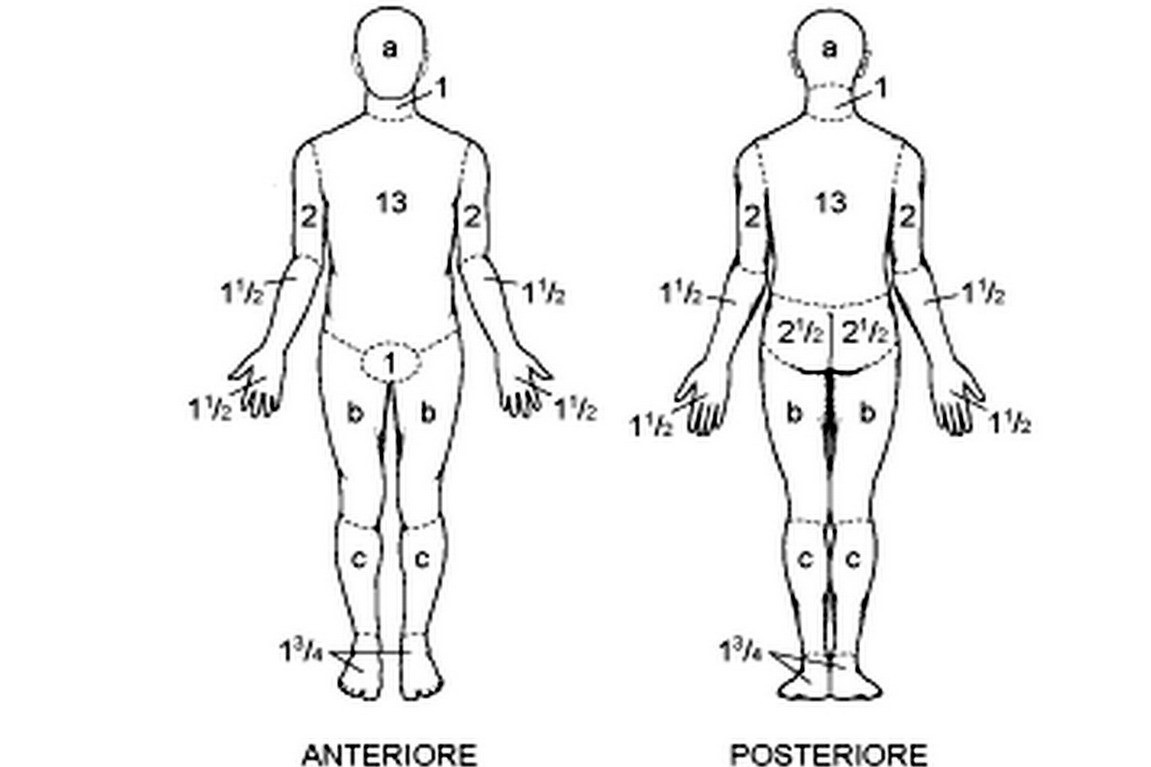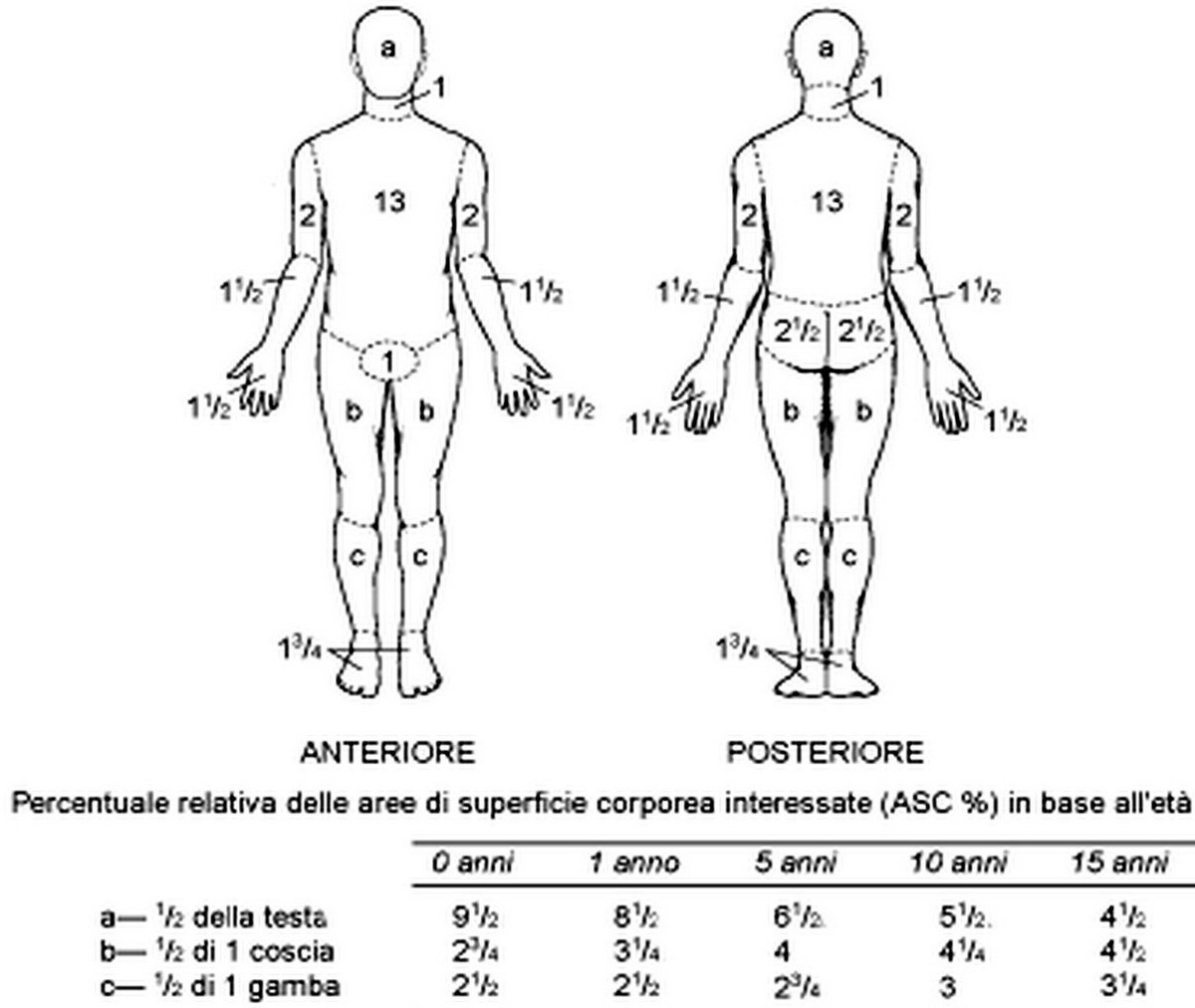
Calculating the surface area of a burn: the rule of 9 in infants, children and adults
The rule of nine: when a burn victim comes to the doctor’s attention, there are several factors that must be taken into account to assess the severity of the situation
RESCUERS’ RADIO IN THE WORLD? VISIT THE EMS RADIO BOOTH AT EMERGENCY EXPO
Along with the depth of the burn (which can be first, second, third or fourth degree), the severity of burns is also determined by the extent of the injured area; the greater this is, the more insidious is the danger to the burn victim’s life.
There are numerous tables to determine the extent of the burned skin as a percentage of the total body surface area (TBSA).
The simplest and most schematic method is Wallace’s ‘rule of 9’.
It is simple and quick to use, especially for an initial classification at the scene of an accident.
After hospitalisation, more complex tables are used that take into account the exact percentages represented by each body segment according to age.
The most commonly used is the Lund and Browder table you see below:
Used at the time of admission to Large Burn Centres, these tables allow the precise mapping of lesions on pre-printed forms, colour-coded for different depths.
A useful addition to the calculation of the size of partially burned skin areas is the palm of the hand including the patient’s fingers, which represents 1% of the TBSA.
Read Also
Emergency Live Even More…Live: Download The New Free App Of Your Newspaper For IOS And Android
First Aid, Identifyng A Severe Burn
Chemical Burns: First Aid Treatment And Prevention Tips
Electrical Burn: First Aid Treatment And Prevention Tips
Compensated, Decompensated And Irreversible Shock: What They Are And What They Determine
Burns, First Aid: How To Intervene, What To Do
First Aid, Treatment For Burns And Scalds
Wound Infections: What Causes Them, What Diseases They Are Associated With
Patrick Hardison, The Story Of A Transplanted Face On A Firefighter With Burns
Electric Shock First Aid And Treatment
Electrical Injuries: Electrocution Injuries
Emergency Burn Treatment: Rescuing A Burn Patient
4 Safety Tips To Prevent Electrocution In The Workplace
Electrical Injuries: How To Assess Them, What To Do
Emergency Burn Treatment: Rescuing A Burn Patient
First Aid For Scalding: How To Treat Hot Water Burn Injury
6 Facts About Burn Care That Trauma Nurses Should Know
Blast Injuries: How To Intervene On The Patient’s Trauma
What Should Be In A Paediatric First Aid Kit
Fires, Smoke Inhalation And Burns: Stages, Causes, Flash Over, Severity
Disaster Psychology: Meaning, Areas, Applications, Training
Medicine Of Major Emergencies And Disasters: Strategies, Logistics, Tools, Triage
Earthquake And Loss Of Control: Psychologist Explains The Psychological Risks Of An Earthquake
Civil Protection Mobile Column In Italy: What It Is And When It Is Activated
New York, Mount Sinai Researchers Publish Study On Liver Disease In World Trade Center Rescuers
PTSD: First responders find themselves into Daniel artworks
Firefighters, UK Study Confirms: Contaminants Increase The Likelihood Of Getting Cancer Fourfold
Civil Protection: What To Do During A Flood Or If A Inundation Is Imminent
Earthquake: The Difference Between Magnitude And Intensity
Earthquakes: The Difference Between The Richter Scale And The Mercalli Scale
Difference Between Earthquake, Aftershock, Foreshock And Mainshock
Major Emergencies And Panic Management: What To Do And What NOT To Do During And After An Earthquake
Earthquakes And Natural Disasters: What Do We Mean When We Talk About The ‘Triangle Of Life’?
Earthquake Bag, The Essential Emergency Kit In Case Of Disasters: VIDEO
Disaster Emergency Kit: how to realize it
Earthquake Bag : What To Include In Your Grab & Go Emergency Kit
How Unprepared Are You For An Earthquake?
Emergency preparedness for our pets
Difference Between Wave And Shaking Earthquake. Which Does More Damage?



